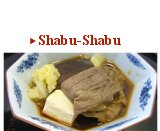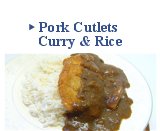“J-Simple Recipes” is the abbreviation for “Japanese Simple Recipes.”
We explain Japanese recipes you can easily cook, as well as typical meals, foodstuffs & table manners.

You can cook Japanese food easily at home!
Japanese Food Tips
Matcha Latte
April 18, 2025
Hot matcha latte
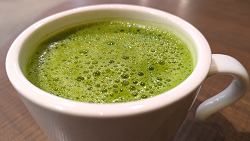
Chilled matcha latte
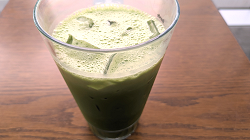
Bottled matcha latte
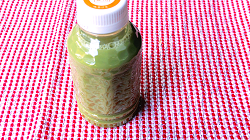
Unlike cafe latte, which is made by adding milk to espresso, matcha latte is made by adding milk to matcha green tea. Matcha is a green tea produced by grinding dried matcha leaves in a tea mill to a fine powder, and is bright green in color and deliciously bitter in taste. The bright green of the matcha combined with the white of the milk turns the matcha latte a light green. It is a delicious drink with a mildly bitter taste. It is interesting to note that the traditional matcha tea, which has a long history in the Japanese tea ceremony, is diluted by adding milk like a cafe latte in Western culture. Matcha is not sweetened with sugar, but matcha latte is usually served sweetened, and is available both hot and chilled. Matcha lattes are sold at well-known coffee chains, convenience stores, and supermarkets. If you are ever in Japan, please try the matcha latte.
- Related:
- Table Manners - How to Prepare Matcha Easily
- Recipe - Matcha Green Tea
- Recipe - Matcha Banana Milk
- Recipe - Matcha Liqueur
- Foodstuffs - Matcha Powder
J-Simple Recipes
What kind of impression do you have when you say Japanese food?
You may imagine healthy, colorful, beautiful, high quality, traditional, etc. Can you imagine cooking Japanese food at home? Most people may think that it is difficult.
However, we think otherwise. Therefore, here at J-Simple Recipes (Japanese Simple Recipes) we have prepared recipes for traditional Japanese dishes and international dishes with a Japanese twist which can easily be made at home.
It may be difficult to obtain all Japanese foodstuffs and seasonings, so we have included substitutions you can make. If you cannot get any Japanese foodstuffs or seasonings at the shops in your neighborhood, you can purchase them at numerous sites on the Internet.
At J-Simple Recipes, we have three keywords: “Simple,” “Healthy” and “Delicious.”
Simple
We want you to continue to cook Japanese food for a long time, so we have made the recipes simple.
Healthy
Because the Japanese cuisine has many low-calorie foods, you can have a healthy meal naturally and may not gain weight even if you eat a little too much.
Delicious
You may think that healthy and easy- to-cook food is not delicious, but that is not so with J-Simple Recipes.
J-Simple Recipes includes some international dishes with a Japanese twist, too. For example, even if you are just frying meat or vegetables, you can add soy sauce as the final seasoning in order to give any international dish a Japanese twist. So you can easily begin to like Japanese food.
Everyone has their own eating traditions, but if you add just a few Japanese recipes, your cooking experience will expand.
So please enjoy cooking Japanese food.
At J-Simple Recipes, we have six categories:
Japanese/Int'l. Recipes
Japanese food and international dishes with a Japanese twist. It is the main part of this site.
Traditional Recipes
Japanese recipes for rice dishes and miso soup.
Foodstuffs
An introduction to foodstuffs used in Japanese cooking.
Typical Meals
An introduction to the typical breakfast, lunch and dinner of the Japanese people.
Table Manners
This section on table manners is designed to help you in eating Japanese dishes.
J-Food Plaza
This section includes Mago wa Yasashii, Japanese Food Lovers' Comments, Word Tidbits and Japanese Food Tips.
- Mago wa Yasashii
- Japanese recipes that are particularly healthy.
- Japanese Food Lovers' Comments
- In this section, you can read comments from our website users about Japanese food.
- Word Tidbits
- Here, by clicking on the “more” button or photo, you can find the Kana and Kanji for each recipe listed on our site, and also hear audio of the Japanese name for each recipe.
- Japanese Food Tips
- In this section, we introduce interesting and possibly little known facts about Japanese food.
Copyright © 2025 J-Simple Recipes. All rights reserved.


